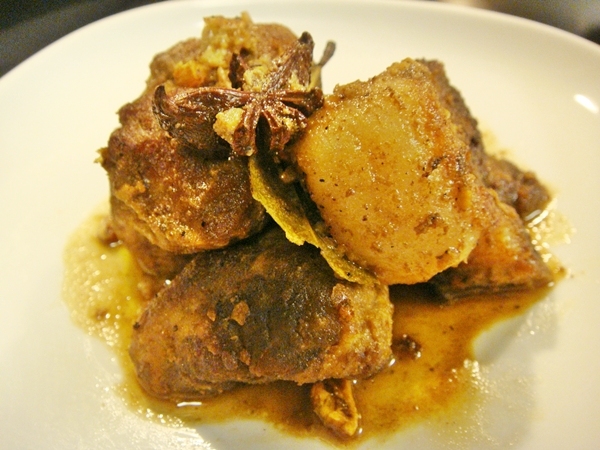 (Chicago) – Monday: pork adobo; Tuesday: chicken adobo; Wednesday: vegetable adobo; Thursday: fish adobo; Friday: school cafeteria lunch. I am not exaggerating. This was my typical weekly lunch pack menu that my lola prepared for me when I was in high school. How often? Hmmm… My estimate is around 1 or 2 weeks every month. Do the math. That’s how much adobo I have eaten in high school alone, not counting the countless adobo dinners when I get home. What’s amazing, though, is that I never get sick of it. There must be something about this dish!
(Chicago) – Monday: pork adobo; Tuesday: chicken adobo; Wednesday: vegetable adobo; Thursday: fish adobo; Friday: school cafeteria lunch. I am not exaggerating. This was my typical weekly lunch pack menu that my lola prepared for me when I was in high school. How often? Hmmm… My estimate is around 1 or 2 weeks every month. Do the math. That’s how much adobo I have eaten in high school alone, not counting the countless adobo dinners when I get home. What’s amazing, though, is that I never get sick of it. There must be something about this dish!
Just for kicks, I asked a few foreign friends to tell me what country adobo comes from. Only 2 out of 5 answered Philippines and the rest responded Mexico. I am a little baffled. I had the impression that everyone was thinking adobo to be uniquely Filipino. I am not very observant that in the Mexican aisle of any groceries here in the US, there are a lot of adobo products, whether powdered mix or canned soup. We have a case of identity crisis here. This is a good premise for a future post with more solid research on adobo’s origin. But for now, I will leave this thesis hanging and proceed with a more appetizing side of adobo.
I have tasted numerous versions of adobo; every region in the Philippines has its own version and claims to be the most authentic or the best. It’s not just regional. Many Filipinos themselves brag about their own adaptation. Like a blank canvass to a painter, adobo is a simple and versatile base template to use for creating your own rendition of this tangy stew as influenced by your experience, background or personality. With thousands of available ingredients to use, it is not difficult to come up with a tasteful variant of adobo.
Here’s my version of adobo. Since I love Chinese and Spanish food, I thought
of incorporating these tastes by using star anise and paprika, respectively, into my adobo. The flavor dramatically changed with hints of licorice from star anise and smokiness from paprika while keeping the briny tart base taste intact. Not to mention, the aroma while cooking is just intoxicating. The basic soy sauce-vinegar adobo is already a favorite in every Filipino dining table. A little more twist makes this star dish shine even brighter.
Ingredients:
- 3 lbs pork (picnic ham, belly or ribs) – stew size cut
- 10 cloves of garlic chopped + 2 cloves minced
- 2 star anise
- 3 bay leaves
- ½ cup soy sauce
- 1 cup vinegar
- 2 cups water
- 10 peppercorns
- 1 tsp paprika
- 1 tsp sugar
- 2 tbsp oil
Directions:
- Heat oil in a large pan on high heat.
- Pan-fry all sides of pork pieces until brown. Do this in batches so as not to crowd the pan
- Set aside the browned pork. Reduce oil but leave the cooked-on residue in the pan.
- Saute minced 2 clove of garlic for a minute.
- Add vinegar, soy sauce and water to deglaze the pan. Then, add star anise, bay leaves, peppercorns, paprika and sugar and simmer for 5 minutes.
- Add browned pork and cover. Let it cook for 50-60 minutes under medium heat until the pork is tender and liquid is reduced to half.
- While the pork is braising, toast the rest of chopped garlic in a small pan on medium heat. Set aside for garnishing.
- Serve hot with sprinkled toasted garlic on top and rice on the side.
Variants:
Just remove the star anise and paprika if you fancy the typical adobo recipe. Also, you may lessen the soy sauce and vinegar for a more subdued taste but keep the 1:2 proportions. If you want a thicker sauce, lessen the water.
[email_link]

